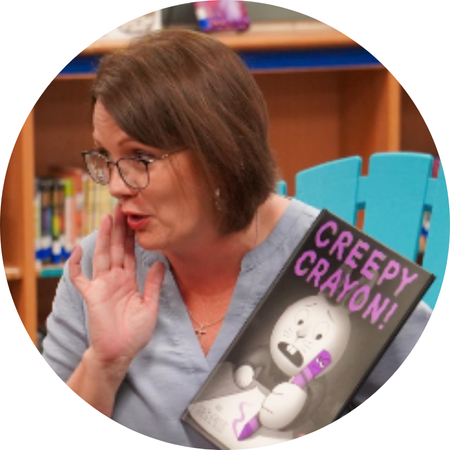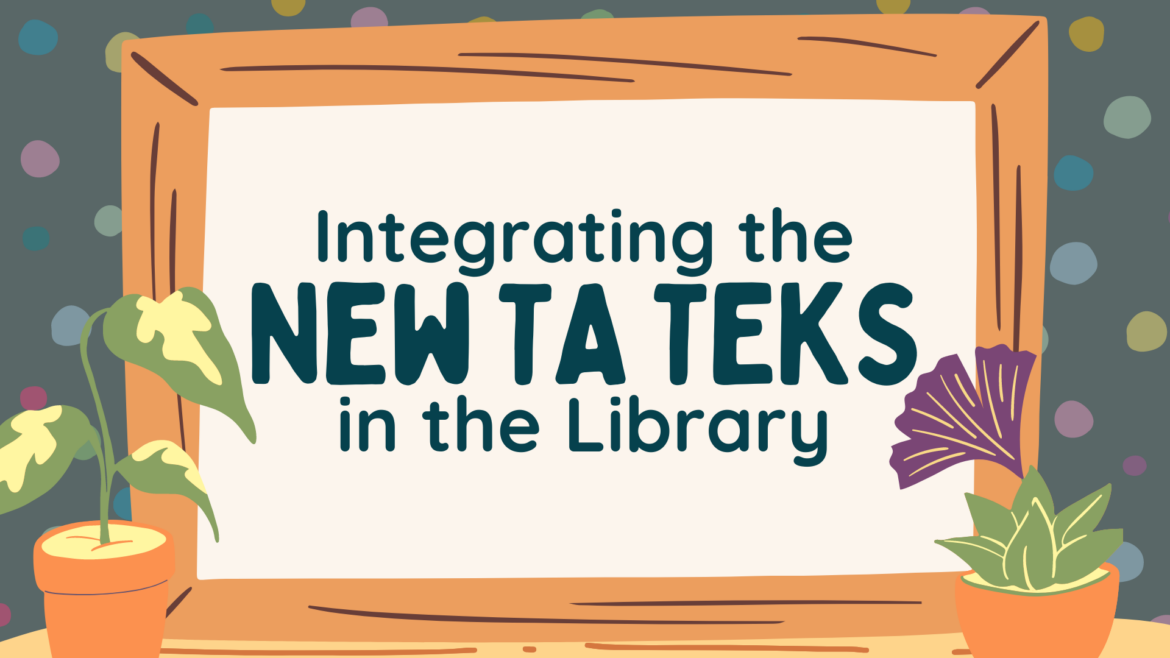The new K–8 Texas Essential Knowledge and Skills (TEKS) are here and ready for implementation with the start of the 2024 school year! There are several changes and updates in these new technology application TEKS, but one of the most impactful changes is the integration of the TEKS into all subjects. This means everyone is responsible for the new TA TEKS, including librarians.
Librarians already teach many of the topics found in the new TA TEKS, but if you need new ideas, we’ve compiled several easy ways to integrate the TEKS into both elementary and middle school libraries. You can also see more ideas for implementation in Stephanie and Patrina’s past Librarian Conference presentation at this link.
TA TEKS 1. Computational Thinking: Coding and Breaking Down Ideas into Small Pieces
The new TA TEKS introduces coding starting in kindergarten, which means that you now have a documented reason to pull out those Beebots, Code and Go Mouse kits, and Spheros. Start with unplugged coding by breaking down a story into smaller sequential pieces. Make a giant grid on the floor and allow students to take turns being the main character of the story while the rest of the class helps (codes) the character through the story. Then try doing the same tasks using Beebots or other simple coding robots.
In secondary libraries, implementing puzzles or logic games into your makerspace is a great way to start embedding computational thinking. Don’t forget online options too! Scratch, ScratchJr., Bloxly, Ozobots, Code.org, and lots of other websites offer online coding opportunities.
TA TEKS 2. Creativity and Innovation: Understanding Design Processes, Emerging Technologies, and the Impact of Technology on the Community
Do you have a 3D printer that you don’t know what to do with? Well, it’s time to get that printer out of storage and learn how to use it! Students can use programs like Tinkercad to create 3D projects to solve everyday problems. If their designs don’t work (and they probably won’t), they can follow the engineering design process by returning to the online program to correct the problems.
In the secondary libraries, teach students and/or teachers how to design comic strips using Canva. If you have access to Adobe Express, this is a great tool to implement as well. Secondary students also enjoy open-ended projects that can be done in a makerspace.
TA TEKS 3. Data Literacy, Management, and Representation: Learning How to Find and Organize Data
From using keywords to demystifying the intimidating Boolean operators, librarians are uniquely equipped to help kids find reliable and relevant information. Librarians can make collecting data fun for younger students by posting data on their favorite or most checked-out books. Let students vote for their favorite book by putting a cotton ball in a jar. As the cotton balls grow, they will see the numbers grow. What a great way to help young students see a visual representation of numbers!
In secondary libraries, take a survey of favorite genres, books, or reading preferences (ebook, audio, print) and then show students how to take this data and manipulate it to make it visual! You can also collaborate with math/science teachers to show students how to manipulate and create visual data using Google Sheets and Google’s Looker Studio.
TA TEKS 4. Digital Citizenship: Acting as a Responsible Citizen in a Digital Community
One effective way to teach Digital Citizenship is using picture books. This method is successful because of the conversations, and community building, that happen with a shared book. In Patrina’s TechNotes article “Seven Picture Books with Digital Citizenship Themes,” you can discover how to use picture books to teach digital citizenship concepts.
In secondary libraries, create a library blog where you have students write blog posts about digital safety and etiquette. You can also help students make Tik-Tok style videos and post them on the library blog as well.
TA TEKS 5. Practical Technology Concepts: Using a Computer and Identifying the Pieces
With more and more state testing occurring online, our students are in dire need of correct keyboarding and mouse skills. Basic skills should be taught using a typing program, but you can reinforce those skills by having students type all kinds of things in the library. Let students type out book reviews or explanations for their coding activities. Students need to learn how to name, share, and organize their files, so let them share their documents with you. Buy nonfiction books about robots, computers, AI, coding, and other concepts that you can share with students. Display them with an old computer that you’ve taken apart so they can see the insides.
Librarians have been promoting makerspace, coding, robotics, good research practices, and digital citizenship for years. While these topics seemed like added components to the curriculum in the past, they are now a required part of every Texas school. Document your projects and share with your administrators the amazing work you are doing to support the new technology application TEKS in the library!

Patrina Nix
Patrina is a Library Media Specialist at Cedar Creek High School in Bastrop, TX, and the Lead Librarian for Bastrop ISD. She has been in education for 20 years as a teacher or librarian in Georgia, Colorado, Kansas, and Texas. She especially enjoys presenting at educational conferences and mentoring new librarians. When she’s not teaching or leading from the library, she loves two-stepping in dance halls and tubing down Texas rivers with her husband and three daughters! Patrina shares her library and family adventures on Instagram at @CedarCreekReads and @PattieNix

Stephanie Galvan Russell
Stephanie Galvan Russell is a School Librarian, Educational Technology Specialist, and Instructional Designer in Austin, TX. She serves as Chair of the TLA Spirit of Texas Reading List Committee, has been Chair of the Texas Maverick Graphic Novel Reading List Committee, and was a member of the 2023 TxLA Annual Conference Planning Committee. Stephanie is a graduate of the 2023 Class of TALL Texans Leadership Development Institute. Stephanie was the 2018 YART Young Adult Reading Incentive Winner and TASL Media Virtual Presence Honorary Award Winner for her blog, The Lispy Librarian. She also manages the TCEA Librarians Online Community. Her passions include effective technology integration, engaging and purposeful PD, and connecting students to diverse books. She can be found on socials @lispylibrarian.

